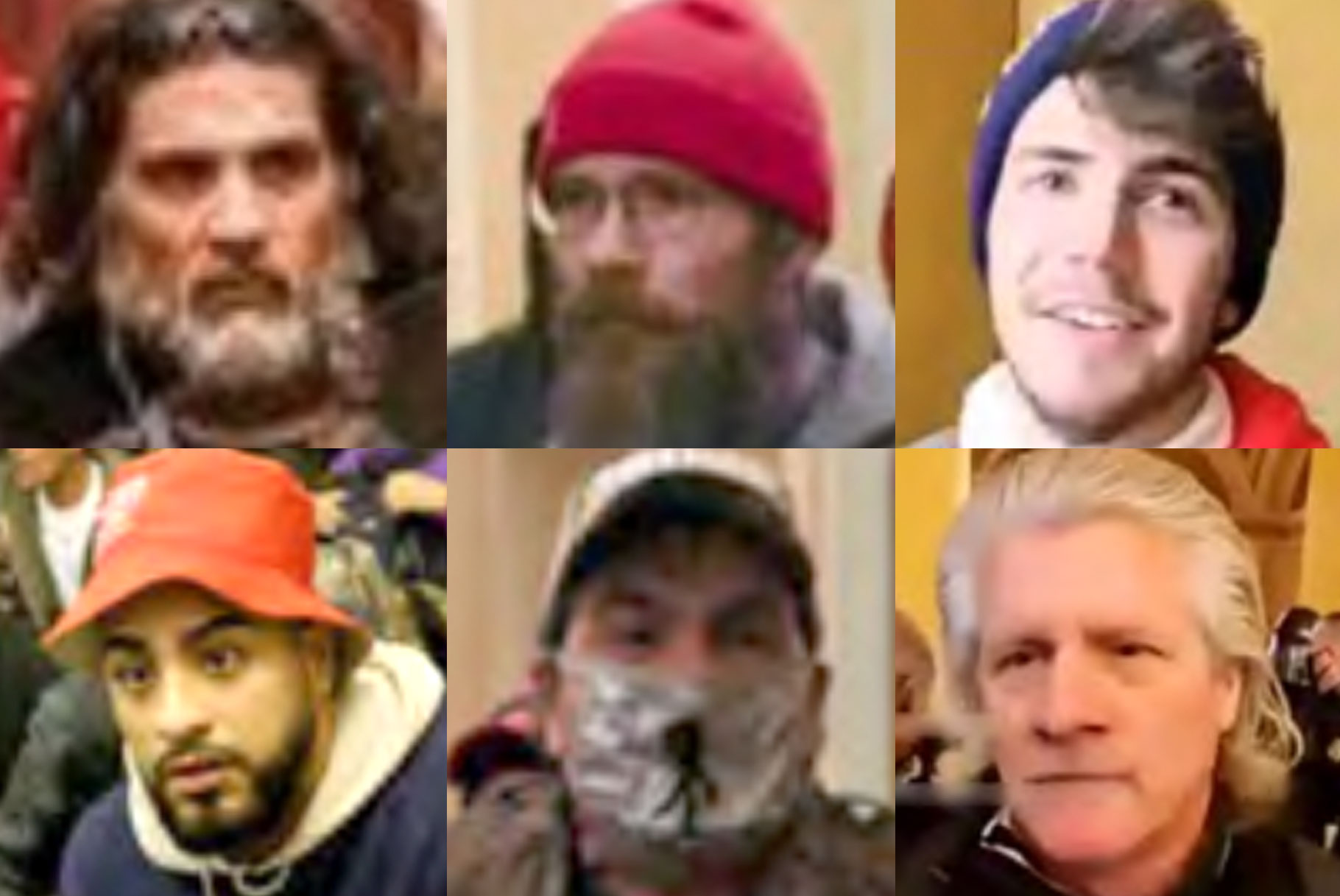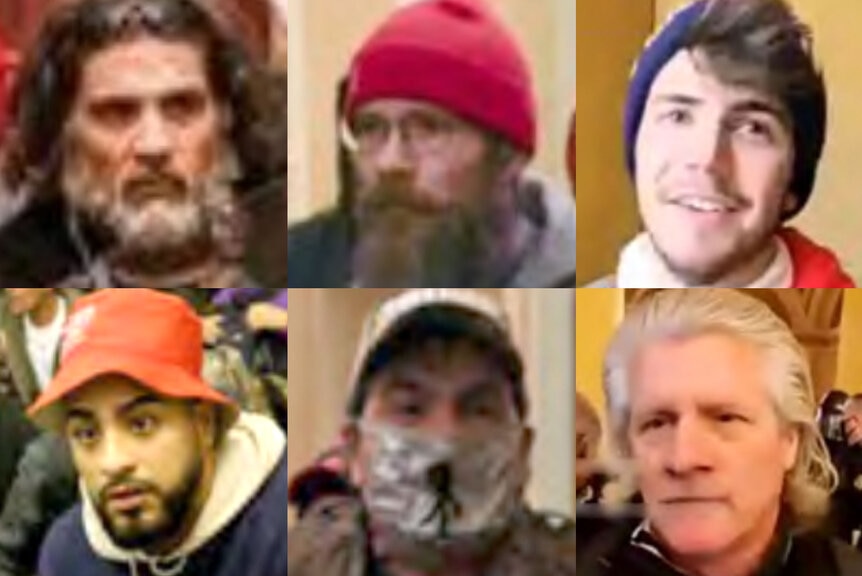Create a free profile to get unlimited access to exclusive videos, breaking news, sweepstakes, and more!
How Crowdsourcing Is Helping Law Enforcement Identify Suspects From The Capitol Hill Attack
Investigative journalist Billy Jensen notes that sifting through the social media footprint of those who were already identified in connection with the Capitol Hill riots could lead to other possible suspects.

The internet is coming together to help law enforcement identify and track down suspects from the shocking and deadly breach on Capitol Hill last week.
While initial scenes of the mob assault were harrowing enough, subsequent footage has shown an even greater level of chaos and violence as hundreds of Trump supporters swarmed the halls of Congress after charging through barricades and doors. One demonstrator was trampled to death and five people died in all, including U.S. Capitol Police officer Brian Sicknick, who was killed after being struck in the head by a fire extinguisher hurled from the out-of-control crowd.
Other footage showed members of the mob attacking another police officer, dragging him across the ground before one man beat him with the pole of an American flag. In the end, at least 50 police officers were injured during the violence.
And while the Capitol descended into chaos, there were other attempts at carnage across Washington D.C., as authorities discovered pipe bombs at the headquarters of both the Republican and Democratic national committee headquarters.
In the aftermath of the riot, law enforcement has been trying to identify the culprits involved in some of the more heinous incidents, relying on members of the general public to come forward with information that might lead to arrests. The FBI has started sharing dozens of photos of possible suspects who were "actively instigating violence," in the hopes that people in their communities will be able to identify them.
The internet has swiftly swooped in to assist.
An Instagram account called “Identify Homegrown Terrorists” was created in the aftermath of the chaos and boasts more than 325,000 followers. The page has been sharing images from the FBI and other sources, which they claim has led to several identifications.
"Thank you to all of you True Patriots for joining me in standing up for Democracy," one of the post states, speaking directly to those who helped in tracking down suspects.
John Scott-Railton, a senior researcher at the University of Toronto’s Citizen Lab and expert at tracking people down using the tools of the internet, has taken to Twitter to ask users for help in identifying several alleged rioters, including a bomb suspect. His crowdsourcing effort has resulted in the identification of two suspects, including Eric Munchel, the suspected “Zip Tie Guy” seen in footage in the Senate gallery wearing body armor and sporting restraints typically used by law enforcement, GQ points out.
“The identification of those two men was a really interesting example of what can happen when a lot of people put their minds together and really try to solve an urgent problem,” Scott-Railton told the outlet.
It wasn't easy to identify personal physical characteristics of "Zip Tie Guy" because he was covered in gear, so Scott-Railton and his followers instead began studying what he was wearing and noticed, among other things, a patch that had a "thin blue flag superimposed onto the outline of the state of Tennessee," he told GQ. Starting with small facts like that, Scott-Railton began trying to piece together more information about his movements and activity on the day, which included having a journalist tweet at him that he thought the same guy had harassed him at a Hyatt hotel in the city. Each distinguishing feature, including the fact that he was seen in several shots seemingly accompanying a woman, led to more and clearer pictures. Scott-Railton ultimately began crowdsourcing with sleuths in Tennessee, seizing on the patch he'd been wearing, and one of them was able to pinpoint an online profile believed to belong to the suspect.
Billy Jensen, investigative journalist and author of “Chase Darkness with Me: How One True-Crime Writer Started Solving Murders,” also began sharing images of suspects — including the man apparently beating an officer with a flag pole — on Twitter Monday.
“There are so many eyes on this case, that identifications will happen,” he told Oxygen.com, noting that the group effort has already led to several.
In the past, Jensen crowdsourced for information on more local crimes, which allowed him to focus his search for potential suspects on a specific community.
“The thing about this case is that most of these people are not local,” he said. “They come from everywhere.”
Thus, sharing images and helping them go viral is the most important way to help.
“It will get it in front of more people,” he said. ”Even if you have one follower, it’s going to help.”
Jensen said that sifting through social media pages of already known suspects and persons-of-interest can prove fruitful in finding additional ones.
“A lot of them are connected with each other,” he said. “That’s how they were able to mobilize. You can go through the social media of people who have already been ID'd and see who they have interacted with, see who liked their pictures.”
He emphasized that if one does stumble upon a possible match — whether on Facebook, Instagram or another social media platform — during their research, they should not muse on their potential discovery publicly because the risks of being wrong are enormous.
“Do not name names, do not do side by sides,” he said. “Don’t make it public unless you are absolutely sure this is the person because you could potentially ruin someone’s life who had nothing to do with it.”
Scott-Railton gives the same advice, cautioning people to not make guesses out loud. Rather, he said it’s best to submit information on possible suspects to tip forms and reporters. Jensen said people should contact either their local authorities or the FBI.
The FBI has urged anyone with information about the photos of individuals they posted to call the bureau's toll-free tipline at 1-800-CALL-FBI (1-800-225-5324). People can also submit any information, photos, or videos that could be relevant through the FBI's website. And you can call your local FBI office or, if overseas, the nearest office.























